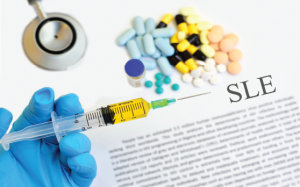
Jarun Ontakrai / shutterstock.com
A recent analysis of retrospective clinical data on patients with systemic lupus erythematosus (SLE) at 14 Canadian centers found that a surprisingly high proportion—at least one-third—had active disease at any point over five years of data collection.1
It has been a longstanding belief among clinicians that SLE becomes less active over time, although its accumulation of inflammatory organ damage is permanent, says lead author Christine A. Peschken, MD, MSc, FRCPC, head of the Section of Rheumatology and associate professor of medicine and community health sciences in the Rady Faculty of Health Sciences at the University of Manitoba, Winnipeg, Canada. “But our analysis found a higher level of disease activity at the study entry point was the single major independent predictor of higher disease activity over time.”
Lupus is a chronic, debilitating, autoimmune disease that leads to irreversible loss of function in a number of organs. It is known to present fluctuating levels of inflammation, and persistent disease activity is associated with high levels of morbidity and mortality, Dr. Peschken says. “You see some lupus patients and they don’t have any evidence of disease—no skin rash, no swollen, tender, painful joints, no signs of lung, kidney or neurologic inflammation.” That could mean remission, or it could mean adequate control from treatment, she says. But a few months later, all of the symptoms return.
The disease is also heterogeneous, which has hampered efforts to develop new drug therapies.2 Only one new medication, belimumab, has been approved for SLE since 1955 (with the approval of hydroxychloroquine), and current research emphasizes the development of biomarkers that may help target treatments based on disease subgroups.
The Study
The 1000 Canadian Faces of Lupus is a prospective, multi-center study of patients who had a clinical diagnosis of SLE from 2005–2008 at sites across Canada.3 The researchers enrolled 2,019 patients, with declining follow-up over the course of the study. Ninety percent were female, with an average age of 42 and an average disease duration of 11 years. Disease activity was assessed using the SLE Disease Activity Index 2000 (SLEDAI-2K). Clinical manifestations, treatment, damage accrual and autoantibody status were also recorded.
Data documenting clinical disease manifestations from all available medical records were abstracted using a comprehensive standardized form and entered into a database at enrollment. Study subjects were divided into four groups based on their scores on the SLEDAI-2K: low, moderate, moderately high and very high. Multi-variable linear and longitudinal mixed linear regression models were used to identify predictors of change over time in SLEDAI-2K scores for these four categories.
Findings show that for patients who started at a low level of disease on enrollment in the study, 71% still had low activity a year later. But those with very high disease activity at the start had a smaller chance of achieving low disease activity in subsequent years, and a higher chance of continuing to have very high disease activity.
